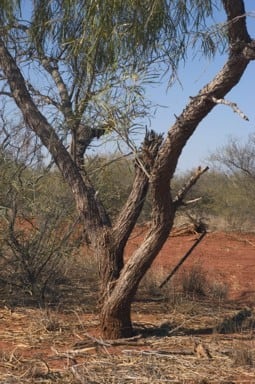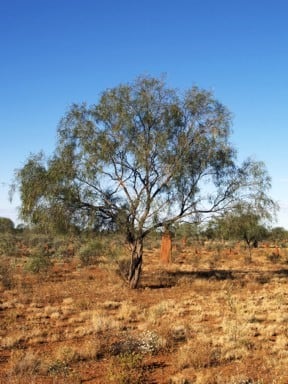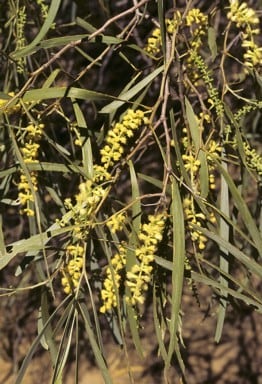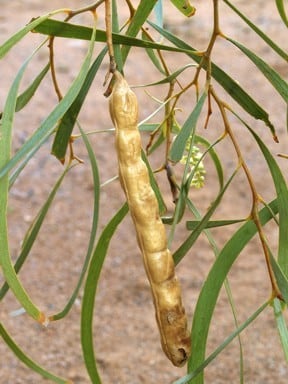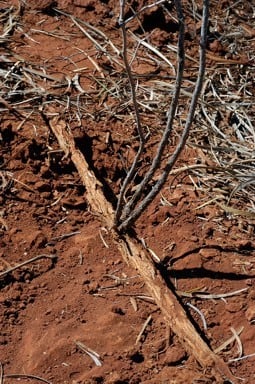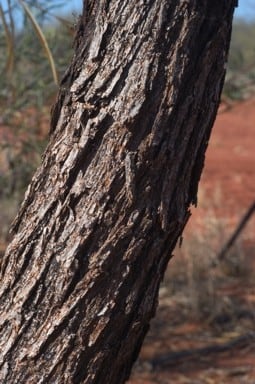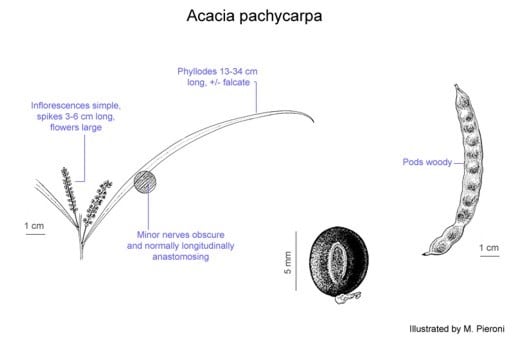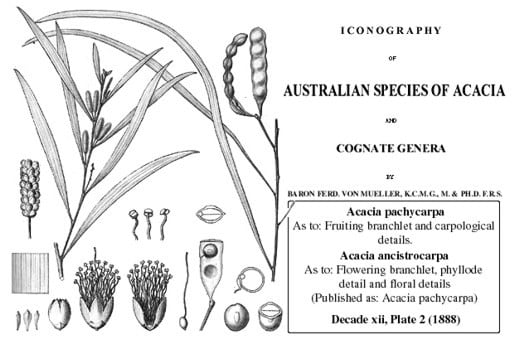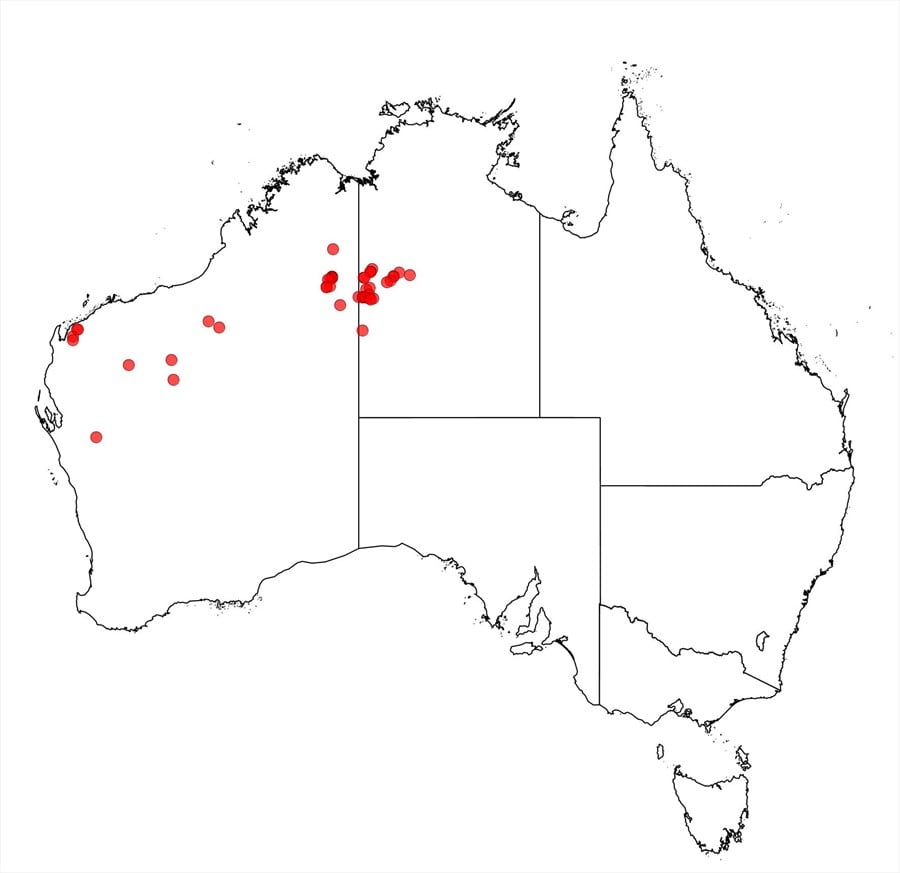Acacia pachycarpa F.Muell. ex Benth.
WATTLE
Acacias of Australia
Family
Fabaceae
Distribution
Distributed mainly in the Tanami Desert region, W.A. and adjacent west-central N.T. where it often forms single-species communities; scattered populations occur W near Telfer Mining Centre and also on Minderoo Stn and Yanrey Stn (near Onslow), W.A.
Description
Tree 3–6 m high, shrubby, with weeping habit. Branchlets glabrous. Phyllodes broadly linear to very narrowly elliptic, ±falcate, 13–34 cm long, (3–) 6–20 mm wide, acuminate to caudate-acuminate, coriaceous, glabrous or ±appressed-puberulous (especially when young), with 1–5 distant main nerves; minor nerves obscure, numerous, and normally longitudinally anastomosing. Inflorescences simple, 1 or 2 per axil; peduncles 2–22 mm long, glabrous; spikes 3–6 cm long, ±1 cm diam., interrupted, cream. Flowers 5-merous, large (3 mm long); sepals united; calyx ±truncate. Pods narrowly oblong, biconvex, to 15 cm long and 2 cm wide, woody, finely longitudinally wrinkled, ±shiny, yellowish brown, glabrous. Seeds transverse, broadly elliptic, 5–9 mm long, dull, brown, not obviously arillate.
Phenology
Flowering time variable.
Habitat
Grows commonly along drainage lines in clay depressions and clay pans but also in sandy alluvium along creeks and in sandy loam.
Specimens
W.A.: c. 40 km S Telfer Mining Centre on track to Rudall R., E.M.Goble-Garratt 111 (BRI, PERTH); Minderoo Stn, near Onslow, A.A.Mitchell 729 (BRI, PERTH). N.T./W.A.: Sturt Ck, F.Mueller 7 (K, MEL) & 92 (K, MEL). N.T.: 40 km W of Supplejack HS, P.K.Latz 8122 (AD, BRI n.v., CANB n.v., DNA n.v., NSW, DNA n.v., PERTH); swamp S of Tanami, J.R.Maconochie 2457 (AD n.v., CANB n.v., DNA n.v., PERTH).
Notes
Possibly related to A. cuthbertsonii.
A relatively fast growing species that regenerates from coppice growth and from seed, it also root sucker after fire or other disturbance. Useful as a fodder and has potential as an ornamental in arid areas but the latter use is limited by the foetid, ‘gidgee’-like odour of the vegetative parts and the flowers, similar to that of A. cambagei and A. georginae.
FOA Reference
Data derived from Flora of Australia Volumes 11A (2001), 11B (2001) and 12 (1998), products of ABRS, ©Commonwealth of Australia
Author
Minor edits by B.R.Maslin & J.Rogers
B.R.Maslin, R.S.Cowan
This identification key and fact sheets are available as a mobile application:
URL: https://apps.lucidcentral.org/wattle/
© Copyright 2018. All rights reserved.

